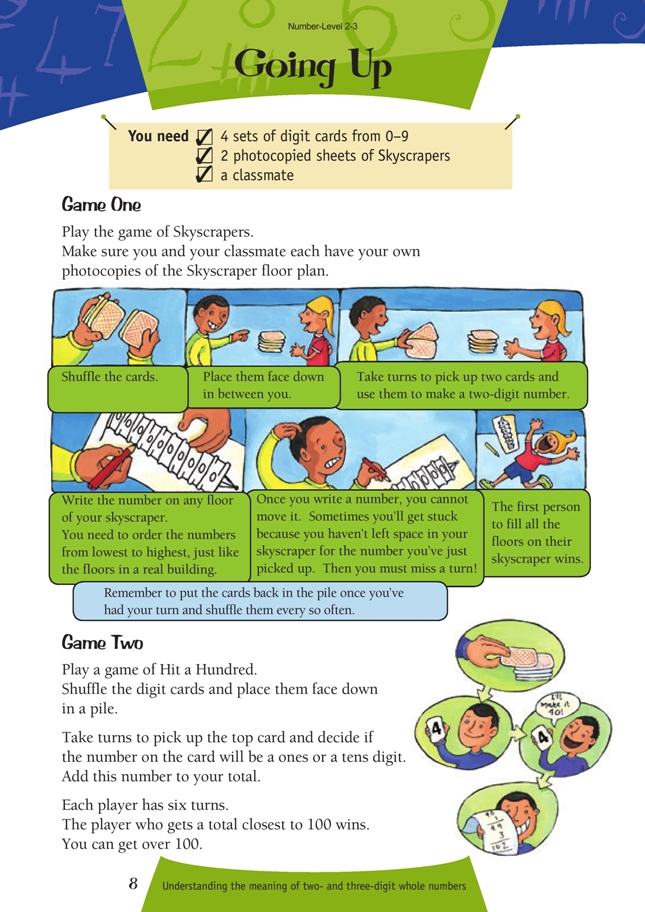This is a level 2 number activity from the Figure It Out series. It relates to Stage 5 of the Number Framework.
A PDF of the student activity is included.
Click on the image to enlarge it. Click again to close. Download PDF (222 KB)
make 2 digit numbers and order them
- 4 sets of Numeral cards
- 2 photocopied sheets of Skyscrapers Copymaster
- FIO, Level 2-3, Number, Going Up, page 8
- Classmate
Game One
Skyscrapers is designed to develop students’ ability to order two-digit whole numbers. (The copymaster for Skyscrapers is provided at the back of this booklet.) After the students have played the game several times, discuss tactics with them. Look for students to suggest that for any number selected, it is important to match the rung it is placed on with its related position in the numbers 0–99. For example, if the number 48 were selected, it would be wise to place it near the middle, but if 11 were selected, then the bottom rung might be best.
The game can be made more difficult by forming a three-digit number for each turn and getting students to start their skyscrapers floor plan at floor 100.
You can develop your students’ understanding of probability by giving them hypothetical game situations. For example:
.gif)
which player do you think is more likely to win?”
Game Two
The game of Hit a Hundred requires students to make choices about where to put digits. A productive strategy is to allocate the first few throws to “tens” in order to build the total as close to 100 as possible and then choose “ones” or “tens” on the remaining throws.
Totals are allowed to exceed 100. This can create rounding issues about which score is closest. For example, is 97 or 104 closest? A number line, which provides a visual representation of the distance between numbers, can help solve such problems.
Answers to Activities
Game One
Skyscrapers game
Game Two
Hit a Hundred game
